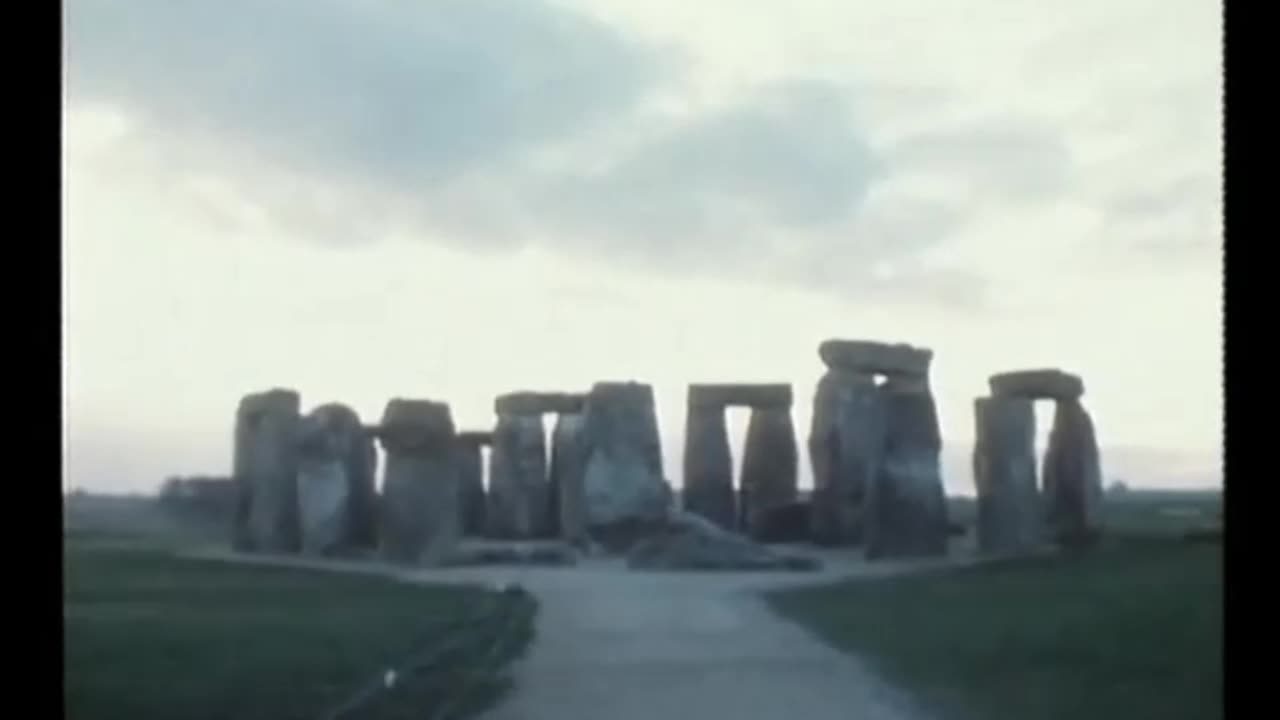Premium Only Content

Stonehenge summer solstice 2024 priesthoods, seasons, power & human sacrifice Jack Hargreaves (1986)
Team finds evidence of commonly conducted ritualized human sacrifice across Europe in the Stone Age
by Bob Yirka , Phys.org
NOTE Out Of Town - With Jack Hargreaves: Volumes 1-9
https://www.amazon.co.uk/Out-Town-Box-Set-Vol/dp/B000MM0C6I
Saint-Paul-Trois-Châteaux pit 69. (A) View taken from the upper part of the 255 storage pit showing the three skeletons, with one individual in a central position (Woman 256 1) and the other two placed under the overhang of the wall (Woman 2 and Woman 3). The 257 photos were taken with a wide-angle lens; otherwise, all three individuals cannot be 258 captured in a single shot. (Credit: A. Beeching) (B) Reconstruction of the remains, 259 blocked under the overhang of the wall of the storage pit lined with straw (typical in 260 storage pits). The woman in the central position was separated from the other two by a 261 feature made of perishable materials. (C) Lastly, the storage pit was filled with stones, 262 most likely at a later point. (D) Detailed view of the individual (Women 3) in a prone 263 position with a box-shaped stone on the left half of her remains (white square). The 264 upside-down grindstone fragment next to the box-shaped stone covers the head of the 265 individual lying underneath (white circle). Credit: Science Advances (2024). DOI: 10.1126/sciadv.adl3374
A team of archaeologists affiliated with several institutions in France and one in Germany has found that ritualized human sacrifice was common across Europe during the Neolithic.
As they report in the journal Science Advances, the group studied the remains of three women found in a tomb in France who appeared to have been ritually brutalized sometime between 4000 and 3500 BCE and compared the remains with others like them found at sites in Europe.
The work began with the study of the remains of three women found in a tomb in Saint-Paul-Trois-Châteaux—two of the bodies showed the women were buried in unusual positions, one on her back with her legs bent upward, the other in a prone position with her neck on the torso of the other woman—characteristics associated with incaprettamento, a murder technique used by organized criminals as a means of intimidation in modern times.
The third woman was lying on her side. One of the women also had a piece of a grindstone set on her skull and another appeared to have been buried alive. The positioning, the researchers suggest, indicates that the victims were likely killed where they lay. They also note that in addition to the odd positioning of the bodies relative to one another, they were also all oriented toward the solstice.
Saint-Paul-Trois-Châteaux and the area surrounding pits 69 and 70. Credit: Science Advances (2024). DOI: 10.1126/sciadv.adl3374
The researchers suggest the positioning likely meant that the women had all been killed using a form of ritualized asphyxiation—ligature strangulation—where the weight of a victim's own body results in strangulation.
To add more credence to their theory, they searched the literature for other instances of similar finds in other parts of Europe. They found 20 cases, from sites in Spain, Catalonia and Eastern Europe. Some of the earliest examples dated to between 5400 and 4800 BCE., an indication that forced forms of positional asphyxiation were conducted as part of ritualistic sacrifices all across Europe for thousands of years. They note also that rock carvings found in a cave in Italy depicted the form of human sacrifice they observed in the cave in France.
STONE-DEAD Inside Stonehenge’s dark past on the summer solstice – from human sacrifices to skinned corpses and a twin torture site
https://www.the-sun.com/news/3124728/stonehenge-dark-history-archaeology-summer-solstice/
Professor Wolfgang Neubauer, who worked at the site, believed the bodies were from around 3,800BC and explained the “very peculiar burial rituals”.
He said: “They had defleshment, they had cutting off heads – heads were actually treated completely differently than the other parts of the body.
“There was preparation of the bones to be put into this large tomb, which was a tomb for the whole community."
Not only was all skin and flesh prized off but the bones were broken into small pieces that were then buried.
Once the tomb was full, Professor Neubauer believed they submerged it along and left other tributes to either the dead or the gods.
-
 2:59:56
2:59:56
Laura Loomer
12 hours agoEP143: Remembering Charlie Kirk (1993–2025)
108K75 -
 58:04
58:04
Man in America
15 hours agoCharlie Kirk’s Assassination—An URGENT WARNING for America
114K172 -
 1:22:15
1:22:15
Glenn Greenwald
13 hours agoCharlie Kirk Assassination Fallout: U.S. Reps Call for Censorship; Do Graphic Videos Serve the Public Interest? Plus: WIRED Reporter on the Dark Side of Surrogacy | SYSTEM UPDATE #513
230K197 -
 1:48:36
1:48:36
Right Side Broadcasting Network
19 hours agoLIVE: President Trump Attends the Yankees Baseball Game - 9/11/25
210K29 -
 1:54:32
1:54:32
Badlands Media
13 hours agoBadlands Media Special Coverage - FBI Press Conference on Charlie Kirk's Assassination
171K21 -
 1:06:19
1:06:19
BonginoReport
15 hours agoManhunt Underway for Charlie Kirk’s Assassin - Nightly Scroll w/ Hayley Caronia (Ep.132)
336K266 -
 1:11:42
1:11:42
Flyover Conservatives
22 hours agoStructural Architect Destroys 9.11 Narrative... What Really Happened? - Richard Gage AIA | FOC Show
115K24 -
 1:51:14
1:51:14
Precision Rifle Network
18 hours agoS5E1 Guns & Grub - Charlie Kirk's "sniper"
67.2K21 -
 13:09:12
13:09:12
LFA TV
1 day agoLFA TV ALL DAY STREAM - THURSDAY 9/11/25
422K100 -
 1:01:56
1:01:56
The Nick DiPaolo Show Channel
15 hours agoDems + Media Killed Kirk | The Nick Di Paolo Show #1792
137K131